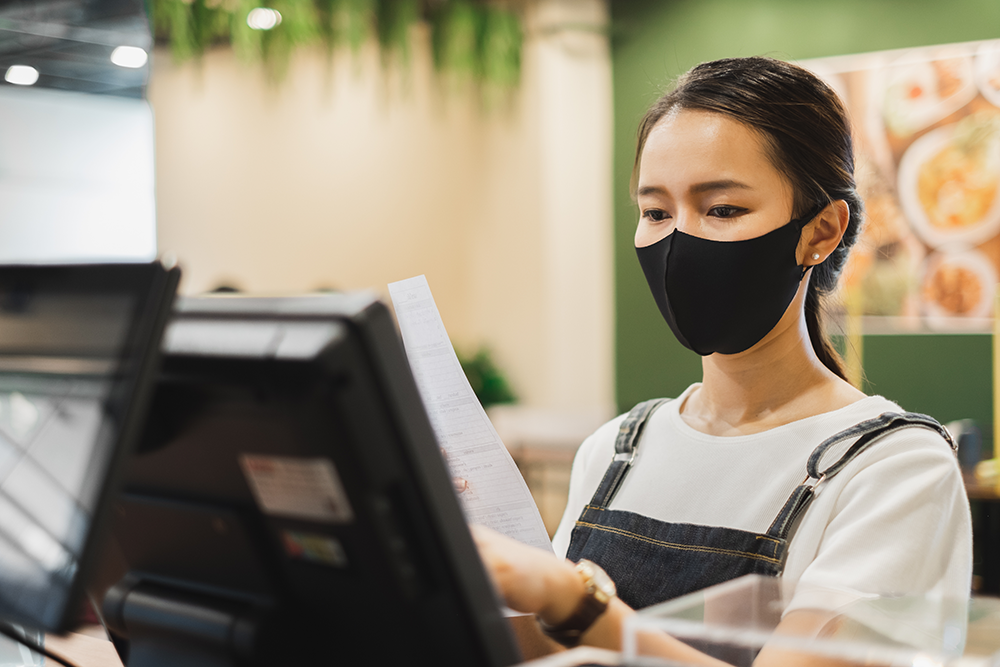By Lisa Michaels, Contributor
The corona pandemic has wreaked havoc on the world economy, and few industries have felt its devastating effects more than the restaurant business. Countless establishments were taken by surprise when governments started issuing lockdown orders.
With people unable to meet in crowded public spaces, restaurants were left scrambling for ways to stay afloat.
Fortunately, going online has been a godsend for some restaurants, sparing them from having to shut their doors permanently. Upserve, the restaurant management platform, has seen its customers enjoy an increase of 783% in the volume of their online order sales.
Furthermore, the platform predicts this number will only continue to grow as we approach the winter because the cold weather will discourage diners from eating outside where it’s safer in public.
However, many restaurants have had a hard time taking their business online. Restaurants that offer fine dining and upscale experiences have struggled with this radical shift to an entirely new business model they have little to no experience with. Even fast-food restaurants have reported finding this pivot challenging.
So, what makes selling on the Internet so difficult for restaurants?
The Biggest Challenges of Moving a Restaurant Business Online
Here are some aspects of moving to an online business model that restaurants often struggle with.
#1 Logistical Challenges
The first and most obvious problem is the logistics of offering a delivery service. For example, the containers for delivery have proven a challenge for several restaurants.
Every restaurant wants to make sure their food arrives fresh and hot. After all, no customer wants soggy fries, mushy burger buns, deflated waffles, or wilted burrito bowls. And while pizzerias might have the perfect container for their doughy goodness, other restaurants are still struggling to find the right solution.
In-store activity is another logistical issue. Several customers will make their order online, but prefer to pick it up at the restaurant rather than having it delivered.
Restaurants must be able to accommodate this foot traffic while maintaining the necessary safety guidelines required to fight the pandemic. Moreover, restaurants should warn customers in advance that there might be a wait.
The kitchen operations themselves are liable to change.
Dedicating an entire food prep line to delivery is prudent, especially if the establishment also serves drive-thru or has physical customers. That will keep people who order online from waiting when the restaurant has many guests on-site, and vice versa.
Many restaurants have overcome the aforementioned logistical challenges by trimming their menu a bit. By offering a smaller number of items, they have been able to run much faster and more efficient kitchens.
#2 Partner Challenges
Since many restaurants will depend on online delivery for survival, they have to be willing to serve a larger geographical area. To that end, many food-serving businesses have partnered up with third-party delivery services, ensuring as wide a coverage as possible.
Unfortunately, this partnership is often fraught with issues.
For starters, restaurants have no control over these delivery service providers. There will be plenty of uncertainty, and if the provider is unprofessional in any way, it could hurt the restaurant’s bottom line.
This is not to mention how exhausting it can be for restaurants to have to pay their service providers a steady commission. Commission fees can range from 15% all the way to 30%. Obviously, one way restaurants could remedy this problem is by increasing their prices to reflect the higher costs they incur.
However, another solution several restaurants have considered is building their own delivery fleets. Panera went with this option a while back, and it’s worked for them. While that may not be feasible for every indie restaurant, it’s worth crunching the numbers to find out.
#3 Technological Challenges
Going online is a technological solution to a modern problem.
Restaurant owners and managers need to appreciate the considerable role technology is bound to play in their business and be willing to invest in it. This can be a difficult expense to justify at a time when most companies are already strapped for cash, with half of them uncertain if they will survive to see next summer.
However, technology is very important when it comes to online delivery, and its role goes beyond simply taking a customer’s order and sending it to the restaurant.
For instance, technology can prevent a restaurant’s employees from entering orders manually, a process dubbed as rekeying. Rekeying increases the likelihood of an order being taken down incorrectly, harming a restaurant’s reputation. That’s why integrating different food ordering channels into a POS system is a good idea.
Technology also helps restaurants capture and make use of all the generated data, improving the overall guest experience. Restaurants can use data to learn customer behavior, better manage their expectations, and tailor their offer based on these insights.
Speaking of data technology, there is also the issue of safeguarding a large amount of customer data, such as credit cards or personal addresses against cyberthreats.
Just like the unforeseen corona pandemic brought the world to a grinding halt, any restaurant is liable to have a crisis of its own, one where its data is lost or, even worse, hacked. Therefore, restaurants would do well to invest in a data recovery plan.
Most restaurants will have to implement several technological solutions to be able to offer effective online delivery services. Integrating such a large number of cogs into one seamless machine is a challenge in itself.
#4 Labor Challenges
As anyone who’s ever worked in a restaurant knows, the kitchen moves according to its own rhythm. It’s almost as if the place has a heartbeat, which moves in synchrony with how crowded or empty the restaurant itself is. With a little time, employees in the kitchen get used to this cadence, even settle into it.
Online orders can easily throw the kitchen staff off of their rhythm.
Whether a restaurant decides to create a separate line or to have the same staff work on every order coming in, the fact remains that managers will have to hire more employees to deal with the larger number of orders coming in. This means that managing a kitchen might be a bit trickier and that congestion problems might come up if management isn’t careful.
Training these fresh hires and showing them how to use the newly-implemented technological solutions should be a priority. After all, the integration won’t be complete until a restaurant’s employees use these solutions seamlessly.
Gearing Up for the Future
Even though the pandemic might be a temporary blip in the expanse of history, it will likely have lasting repercussions. Given how easy and comfortable online delivery is for the customer, its newfound popularity will only increase with time, even after the pandemic has long been forgotten.
Therefore, any investment restaurants make to help them transition towards the digital world is an investment that will likely pay dividends well into the foreseeable future.
About the Author
Lisa Michaels is a freelance writer, editor, and a thriving content marketing consultant from Portland. Being self-employed, she does her best to stay on top of the current trends in business and tech. Feel free to connect with her on Twitter @LisaBMichaels.















